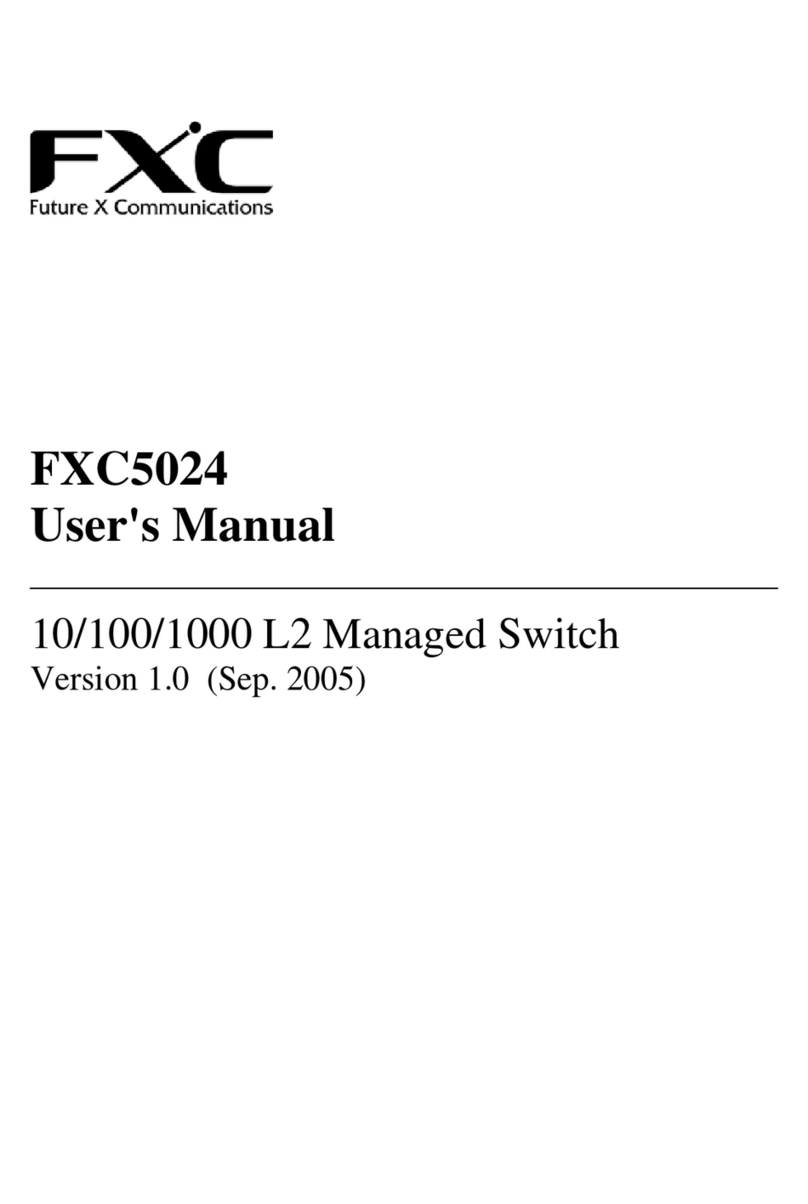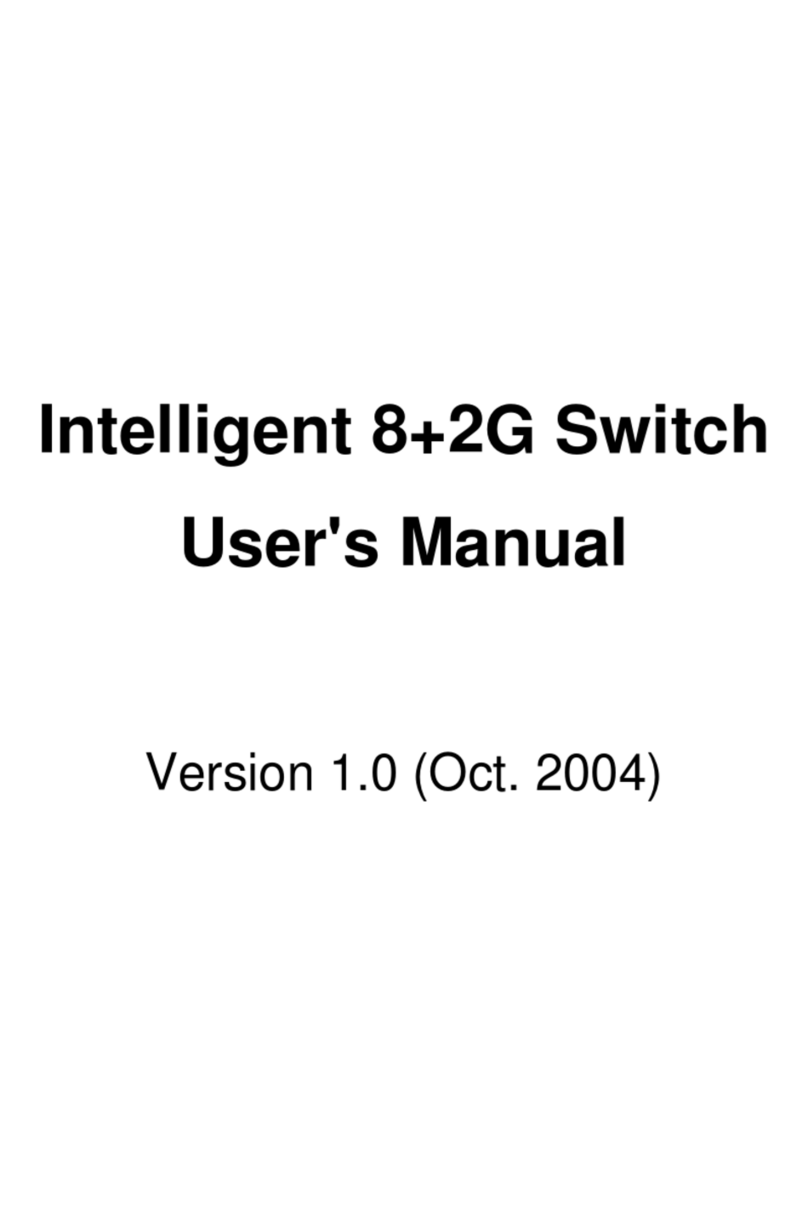User Manual
Publication date: Sep. 2005
Revision V1.0
I
Table of Contents
REVISION HISTORY-------------------------------------------------------------------------------1
ABOUT THIS USER’S MANUAL ----------------------------------------------------------------2
1. INTRODUCTION -----------------------------------------------------------------------------3
1-1. OVERVIEW OF GEL2-SW16 ------------------------------------------------------------------3
1-2. FEATURES --------------------------------------------------------------------------------------- 5
1-3.VIEW OF GEL2-SW16-------------------------------------------------------------------------7
1-3-1. User Interfaces on the Front Panel (Button, LEDs and Plugs)--------------------7
1-3-2. User Interfaces on the Rear Panel ----------------------------------------------------8
1-4.VIEW OF THE OPTIONAL MODULES ----------------------------------------------------------9
2. INSTALLATION----------------------------------------------------------------------------- 10
2-1. STARTING GEL2-SW16 UP----------------------------------------------------------------- 10
2-1-1. Hardware and Cable Installation --------------------------------------------------- 10
2-1-2. Installing Chassis to a 19-Inch Wiring Closet Rail ------------------------------- 12
2-1-3. Cabling Requirements ---------------------------------------------------------------- 12
2-1-3-1. Cabling Requirements for TP Ports------------------------------------------------------- 13
2-1-3-2. Cabling Requirements for 1000SX/LX SFP Module----------------------------------- 13
2-1-3-3. Switch Cascading in Topology ------------------------------------------------------------ 14
2-1-4. Configuring the Management Agent of GEL2-SW16 ----------------------------- 17
2-1-4-1. Configuring the Management Agent of GEL2-SW16 through the Serial RS-232 Port
------------------------------------------------------------------------------------------------------------ 18
2-1-4-2. Configuring the Management Agent of GEL2-SW16 through the Ethernet Port--- 20
2-1-5. IP Address Assignment---------------------------------------------------------------- 21
2-2. TYPICALAPPLICATIONS --------------------------------------------------------------------- 26
3. OPERATION OF WEB-BASED MANAGEMENT---------------------------------- 28
3-1.WEB MANAGEMENT HOME OVERVIEW---------------------------------------------------- 30
3-1-1. System Information-------------------------------------------------------------------- 33
3-1-2. IP Configuration----------------------------------------------------------------------- 35
3-1-3. Time Configuration-------------------------------------------------------------------- 38
3-1-4. Account Configuration---------------------------------------------------------------- 41
3-1-5. Management Policy ------------------------------------------------------------------- 42
3-1-6. Virtual Stack---------------------------------------------------------------------------- 45
3-2. PORT CONFIGURATION----------------------------------------------------------------------- 47
3-2-1.Port Status------------------------------------------------------------------------------- 47
3-2-2. Port Configuration -------------------------------------------------------------------- 52
3-2-3. Simple Counter ------------------------------------------------------------------------ 54
3-2-4. Detail Counter------------------------------------------------------------------------- 56
3-3. MIRROR --------------------------------------------------------------------------------------- 59
3-4. BANDWIDTH MANAGEMENT---------------------------------------------------------------- 60
3-5. QOS(QUALITY OF SERVICE)CONFIGURATION -------------------------------------------- 62
3-6. SNMPCONFIGURATION--------------------------------------------------------------------- 72
3-7. IGMPSNOOPING ----------------------------------------------------------------------------- 74
3-8. MAX.PACKET LENGTH ---------------------------------------------------------------------- 76
3-9. DHCPBOOT---------------------------------------------------------------------------------- 77
3-10.VLAN --------------------------------------------------------------------------------------- 78
3-10-1. VLAN Mode--------------------------------------------------------------------------- 78
3-10-2. Tag-based Group--------------------------------------------------------------------- 81
3-10-3. Port-based Group-------------------------------------------------------------------- 83





























